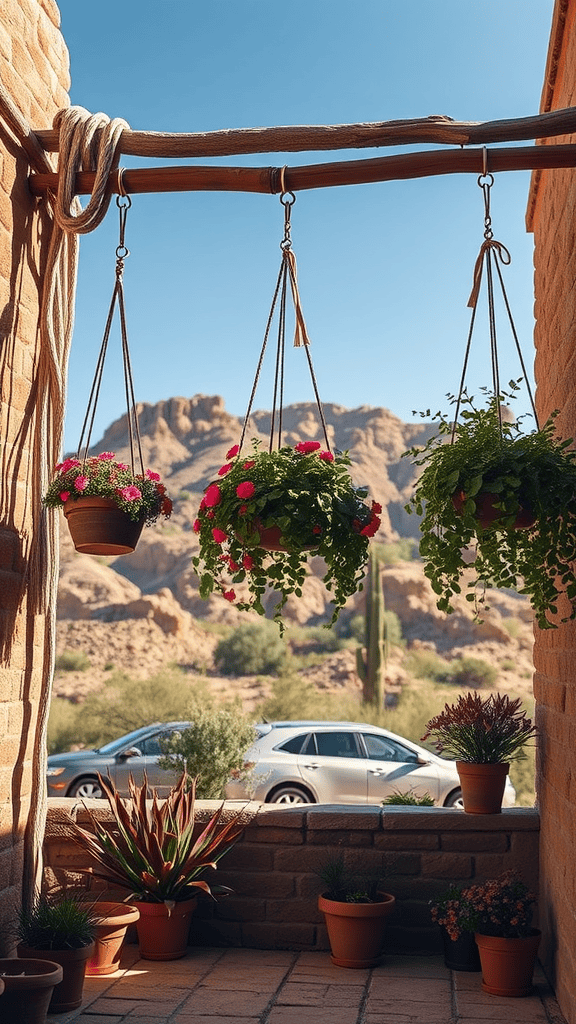Discovering the Location and Features of the Hanging Garden in Page, AZ
If you’re planning a trip to Page, Arizona, you may have heard about the fascinating Hanging Garden. Situated near the famous Lake Powell, the Hanging Garden is not just another destination; it’s a unique geological phenomenon worth exploring. In this article, we’ll dive into the location, features, and tips for visiting this remarkable spot.
Location of the Hanging Garden
The Hanging Garden is located within the scenic Glen Canyon National Recreation Area. To reach this breathtaking site, start by heading to Page, AZ, which is easily accessible by car. The most common approach is to drive along US-89. Once you get to Page, you’ll want to take route 98, which leads you towards the beautiful landscape surrounding Lake Powell.
As you near the area, there are several viewpoints available, but the actual Hanging Garden lies on the Colorado River’s cliffs. You’ll want to either kayak or take a boat tour to truly appreciate its beauty and get an up-close view. Remember to check ahead for boat tour schedules to ensure a seamless adventure.
A Unique Geological Wonder
The Hanging Garden features a striking cliffside of lush greenery that seems to defy gravity. Visitors marvel at how plants grow in such a precarious location. Here are some intriguing facts about this enchanting attraction:
- Location: The Hanging Garden is set above the Colorado River, surrounded by stunning rock formations.
- Flora: It is home to various plant species, mostly ferns and mosses, that thrive in this unusual environment.
- Climate: The microclimate created by the cliffside allows these plants to flourish despite the arid desert conditions of the region.
- Accessibility: The most common access points are either through guided tours or individual watercraft rentals.
Best Times to Visit
The ideal time to visit the Hanging Garden is during the spring and fall months, when temperatures are milder. Summer can be brutally hot, often reaching over 100°F (38°C). If you can, aim for early morning visits to avoid the crowds and to enjoy the cooler temperatures. The golden hour, just before sunset, also offers stunning views and excellent photography opportunities.
What to Bring
Before you set out on your adventure to the Hanging Garden, consider packing the following essentials:
- Water: Staying hydrated is crucial, especially under the desert sun.
- Sun Protection: Sunscreen, hats, and sunglasses are recommended.
- Camera: You’ll want to capture the beautiful scenery.
- Binoculars: Perfect for bird watching or getting a closer look at distant features.
Key Takeaways
Visiting the Hanging Garden in Page, AZ, can be an unforgettable experience. This natural wonder combines stunning beauty with unique geological features, making it a must-see for anyone traveling in the region. Remember to respect the natural habitat and leave no trace during your visit. Whether you’re an avid hiker, a nature lover, or just looking for a peaceful escape, the Hanging Garden has something for everyone.
By planning ahead and knowing what to expect, you can fully immerse yourself in the beauty of this remarkable landscape. The Hanging Garden serves as a reminder of nature’s wonders, and you’ll leave with unforgettable memories and incredible photos to share with friends and family.
So, grab your gear, plan your visit, and prepare to be amazed by the breathtaking sights at the Hanging Garden in Page, AZ!
Exploring the History and Significance of Natural Wonders in Arizona
Arizona is home to some of the most stunning natural wonders in the United States. With magnificent canyons, towering mountains, and unique rock formations, it attracts millions of visitors each year. Let’s delve into the rich history and significance of these natural treasures.
The Grand Canyon
The Grand Canyon is perhaps Arizona’s most famous landmark. Spanning over 277 miles, this iconic chasm was carved by the Colorado River over millions of years. Its steep cliffs and vibrant colors create a breathtaking view that has fascinated people for generations. The canyon is not only a visual marvel but also a site of great geological significance. Scientists study the rock layers to understand the Earth’s history.
Cultural Importance
For Native American tribes, such as the Havasupai and Navajo, the Grand Canyon is more than just a beautiful sight. It holds spiritual significance and is often seen as a place of refuge and ceremonial importance. Various tribes have inhabited the canyon and its surrounding areas for thousands of years, each with their own stories and traditions connected to the landscape.
Monument Valley
Located on the Utah-Arizona border, Monument Valley is renowned for its iconic sandstone buttes. The area is part of the Navajo Nation and serves as a cultural and historical touchstone for the indigenous people. Its towering formations, like Merrick Butte and the Mittens, have been featured in countless films, symbolizing the American West.
Impact on Culture and Arts
Monument Valley has inspired numerous artists, photographers, and filmmakers. The landscapes captured in movies like “Stagecoach” and “Forrest Gump” have ingrained it in popular culture. Artists often find inspiration in the colors and shapes of the valley, showcasing them in various forms of art. These artistic expressions celebrate the land’s beauty and help keep the stories of the Navajo alive.
Saguaro National Park
Home to the giant saguaro cactus, this park is a testament to Arizona’s unique desert ecosystems. The park features thousands of these iconic cacti, some growing to over 40 feet tall and living for over 150 years. Saguaro National Park protects this stunning natural landscape while also providing a haven for wildlife.
Ecological Significance
The saguaro cactus and its surrounding environment play a crucial role in the local ecosystem. Many animals depend on saguaros for food and shelter. The plant flowers in the late spring, attracting a variety of bird species. Moreover, the fruit of the saguaro is a significant food source for both wildlife and the indigenous communities who have used it for generations.
Antelope Canyon
Antelope Canyon is famous for its narrow passageways and stunning light beams that shine through the canyon walls. Located near Page, Arizona, this slot canyon offers a truly unique landscape. The sandstone formations have been shaped by flash floods and wind over thousands of years, resulting in smooth, swirling shapes that draw photographers and nature lovers alike.
Visitor Experience
Hiking through Antelope Canyon feels like walking into an art gallery created by nature. The interplay of light and shadow can be mesmerizing, changing with the time of day. Visitors often take guided tours to learn about the canyon’s geology and the cultural history intertwined with the Navajo Nation.
Watson Lake
Located in Prescott, Watson Lake captivates visitors with its dramatic granite boulders and serene waters. This artificial lake is surrounded by incredible views and is perfect for kayaking, paddle boarding, and fishing. It’s not just a beautiful spot, but a significant part of the area’s ecosystem.
Environmental Benefits
- Habitat for Wildlife: The lake provides a habitat for various bird species.
- Water Resource: It’s crucial for local water supply and recreation.
- Conservation Efforts: Efforts are underway to protect and preserve its rich biodiversity.
In exploring Arizona’s natural wonders, you embrace the beauty and complexity of the Earth’s history. Each landmark narrates stories of ancient times, cultural significance, and the powerful forces of nature. Whether you’re hiking the trails, photographing the vistas, or learning about indigenous traditions, Arizona offers an enriching experience that connects you to the land.
Conclusion
Visiting the Hanging Garden in Page, AZ, offers a unique blend of nature’s beauty and fascinating history. Nestled within the stunning landscapes of Glen Canyon National Recreation Area, this extraordinary site showcases vibrant greenery cascading from a rock wall, all in a desert environment. As you explore this stunning natural wonder, you will be enveloped by the rich colors and diverse plant life that thrive in this unusual micro-ecosystem.
Understanding the significance of the Hanging Garden deepens the experience of your visit. It’s more than just a striking visual; it represents the resilience of nature in the arid region of Arizona. The history of such natural wonders reminds us of the delicate balance between the environment and the ecosystem it supports. The biogeography of the area has led to unique habitats that nurture these beautiful plants, making them a vital part of the region’s narrative.
Appreciating locations like the Hanging Garden is crucial for fostering environmental stewardship. By spending time at these natural wonders, you not only enjoy a moment of beauty but also connect with Arizona’s ecological heritage. Whether hiking, photographing, or simply soaking in the sights, this experience will resonate with you long after your visit. The Hanging Garden, with its enchanting allure and ecological significance, is a testament to the breathtaking landscapes that Arizona has to offer. Don’t miss the opportunity to witness this natural marvel on your next adventure!
As an Amazon Associate, I earn from qualifying purchases.

